Large Diameter Pipe (LDP) Systems
How this system works
Large Diameter Pipe (LDP) systems have gained popularity as an alternative to standard perforated pipe and gravel. LDP systems are generally 10-12 inch. diameter plastic perforated pipe and typically covered in some . Lots of design consideration has gone into the perforations in the pipe and/or the surrounding media.
Common Components Involved
Septic Tanks
The function of septic tanks in septic systems are to hold back the solid wastes and move on the wastewater. These are normally concrete tanks in the ground which may or may not contain separated compartments. Septic tanks are often crucial part in a septic design. Septic system designs often site septic tanks based first on the local concrete manufacturer. Often times, the capacity of the septic tank sited is dependent on which manufacturer is used. Some manufacturers have longer wait times to manufacturer specific septic tank capacities.
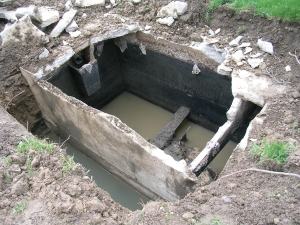
Here is a collapsed septic tank. Visible is the multi-compartments and large volume.
Septic Tank Materials
Some septic tanks are made of alternate materials other than concrete, including polyethylene or fiberglass. Some benefits to utilizing these alternate materials is that they are lightweight and can be carried easier with a chain and a small excavator machine. Some septic tanks are so lightweight they can be lifted with several people.
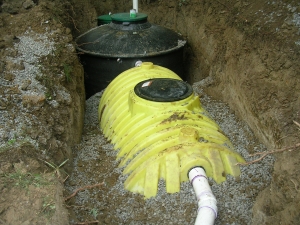
A polyethylene plastic septic tank. Lightweight but often more expensive than concreted.
The water from septic tanks is sometimes called septic effluent. The term septic itself means without oxygen and septic effluent is composed mostly of bacteria and human feces. It is a highly contaminated liquid and human contact is dangerous. Septic tank effluent contains particles of sewage of size 1/16 to 3/16 inch in diameter. The waste strength is measure in Biological Oxygen Demand or BOD.
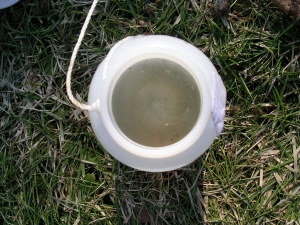
Septic tank effluent is high in solid wastes and pathogens. It must be further treated.
Septic Tank Function
The function of septic tanks in septic systems are to hold back the solid wastes and move on the wastewater to further treatment. The solids can then be pumped at given intervals. The pumping frequency depends on the number of residents in the home and the capacity of the septic tank

Here is a septic tank pumping lookup charge based on residents and capacity.
Secondary Treatment
A treatment train is just a combination of technologies (active and passive) in a series that the water flows through. Secondary treatment is the use of aeration or filtration to further remove pollutants from the water as it moves through the treatment train.
Many advanced treatment systems are one tank with multiple chambers inside the tank. the secondary treatment compartment usually utilizes aeration, filtration, or a combination of both. the product of secondary treatment is usually a wastewater of significantly less polluted than primary wastewater.
How much of my yard will this take up?
I understand most concerns of homeowners is the impact this will have on their outdoor living space. The combination of tanks required to retain the solids and provide secondary treatment will be completely installed below ground. Unfortunately, it is required to provide access to the tank components through lids that extend at least 2 inches above the ground. The footprint of the tanks is generally 8 ft. wide x 20 ft. long and must be installed downslope of the house. The sewer main will be exiting the house below the final grade and fall at a general 1% slope towards the primary tanks.
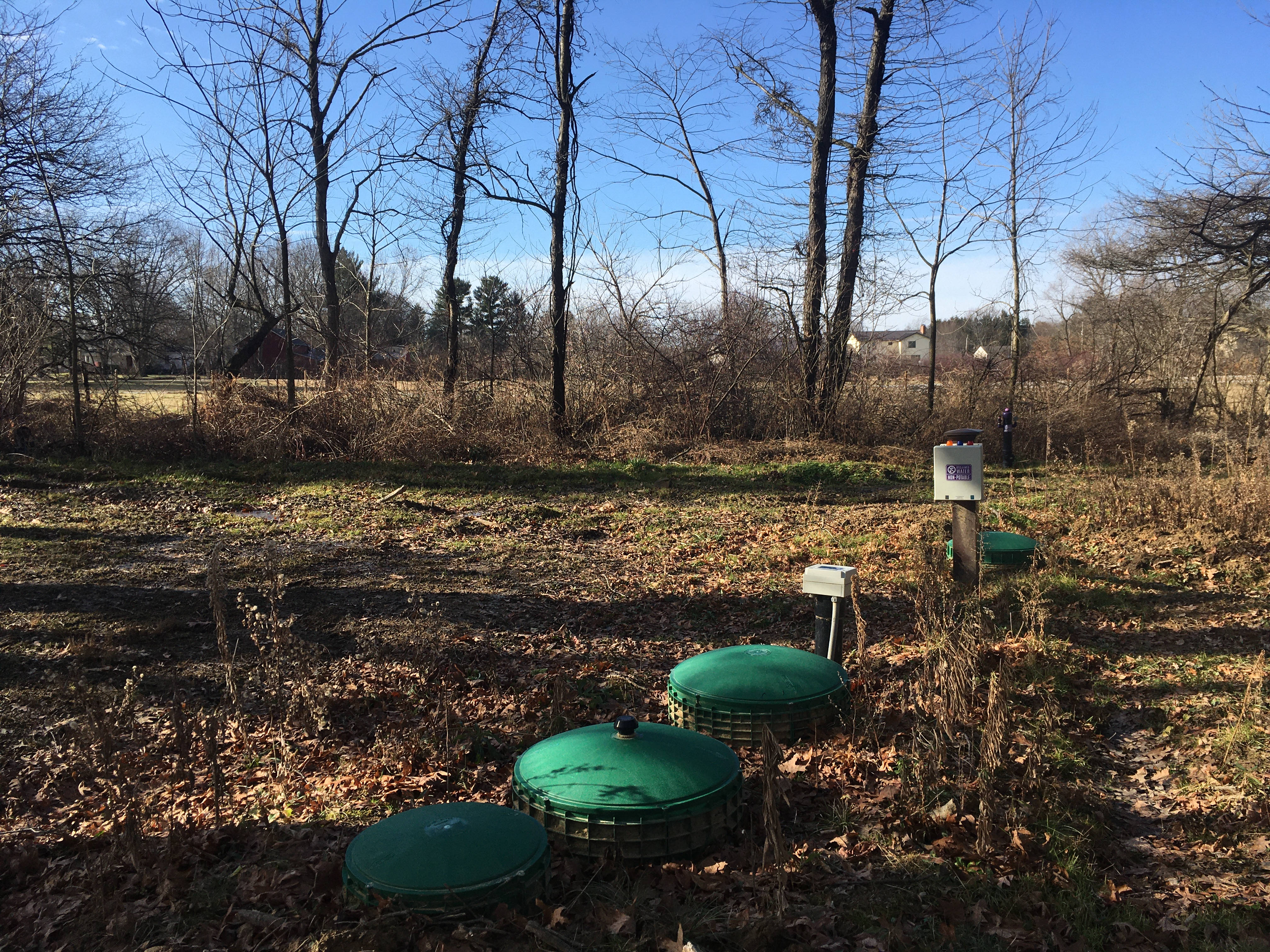
Seen above are the typical green lids, generally 3 lids per treatment tank and one or two lids for the dosing tank. Also seen is a control panel which can alternatively be mounted on the house at a greater cost.
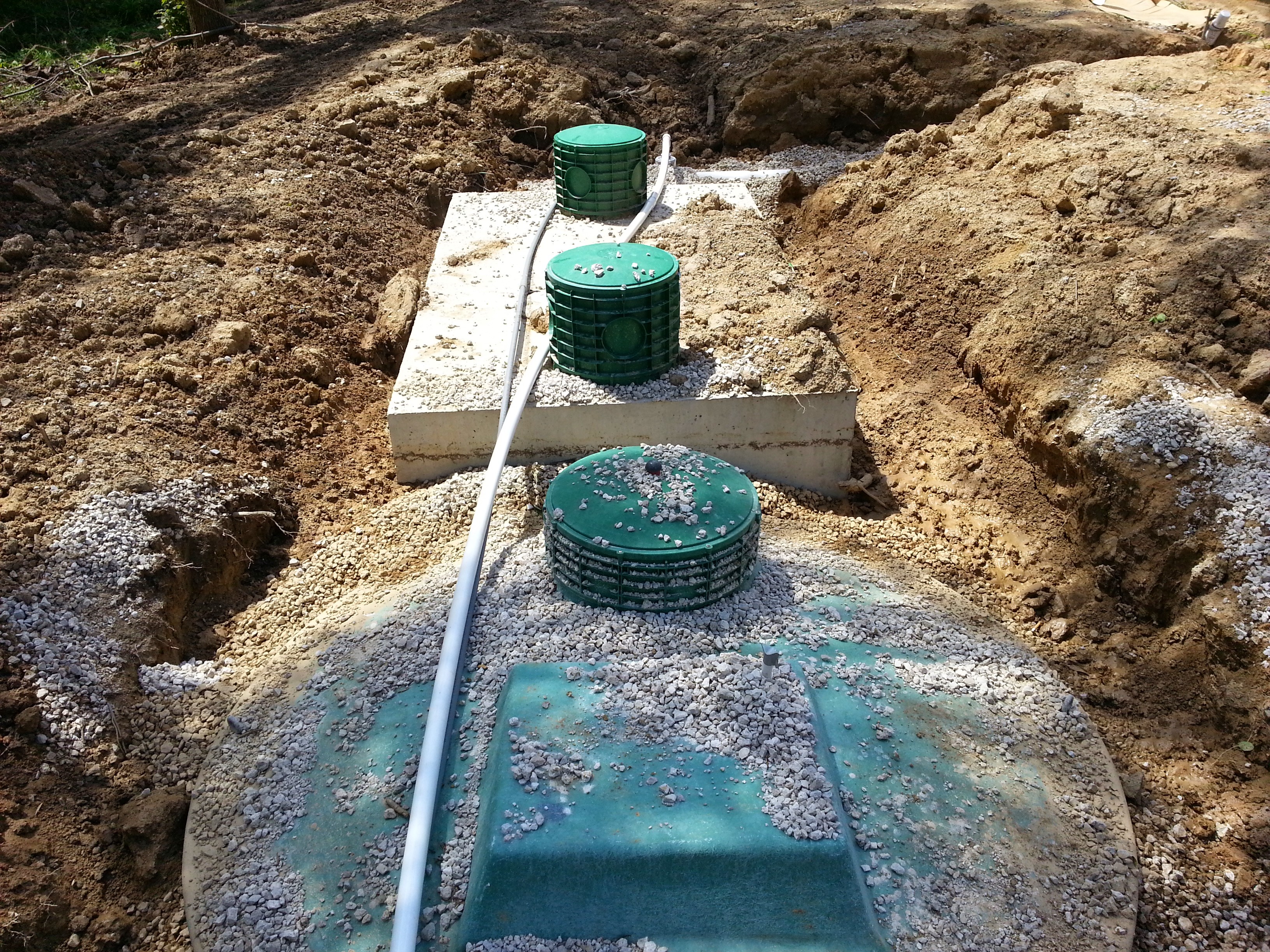
Above you can see the tanks without soil and grass cover. These tanks require electricity to power the aeration motors and control panels.
There are a two main different methods of secondary treatment and many, many proprietary products market and also non-proprietary approved proven construction methods for secondary treatment:
Maintenance required for secondary treatment units are typically recommended at 6 month by the manufacturer. The maintenance includes ensuring any aeration motor is functioning properly and free from obstruction and any filtration is cleaned.
Sand Fill and Product Approvals
In certain areas sand fill can be used in combination with the LDP product to achieve approvals for sites with poor soil. Testing of the effluent from these combinations have shown significant reduction in Total suspended solids and biological oxygen demand. Many regulatory agencies have accepted testing results from LDP systems and allow reductions in sizing requirements or the depths of installations.
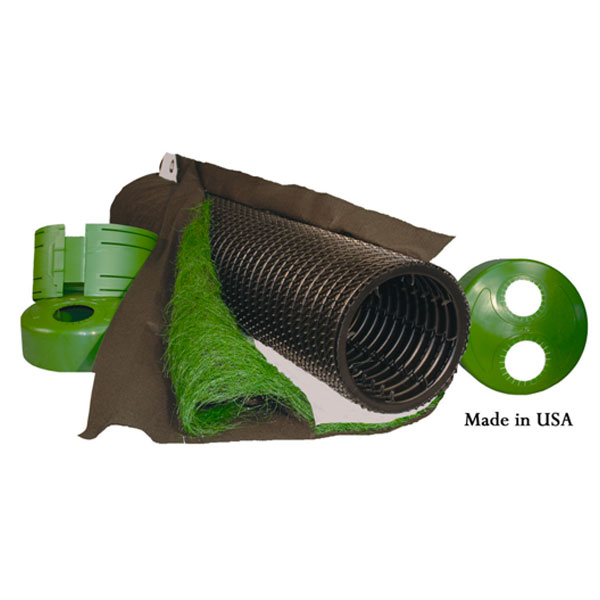
Advanced Enviro-Septic™ (AES) pipe owned by Infiltrator

Advanced Treatment Leachfield (ATL) by Infiltrator
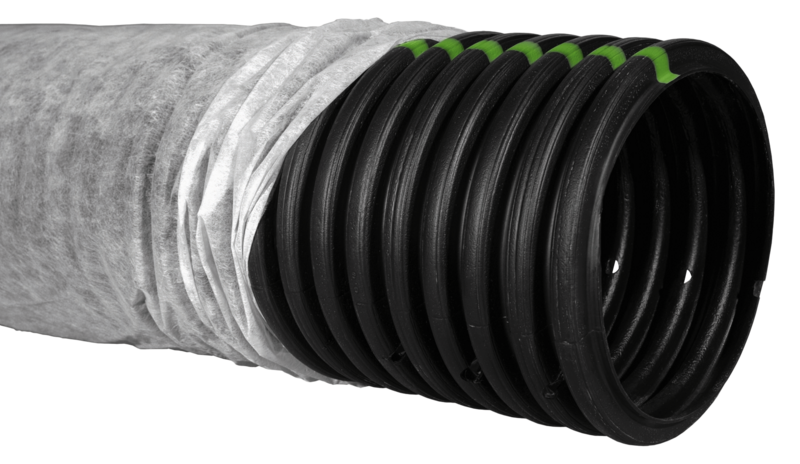
SB2 Leach Bed Pipe by ADS

Spread-Rite™ Septic Pipe by Crumpler Plastic Pipe Inc.
Many of these systems have a design and construction manual written for each specific area is has been approved in. NewSeptic spent a lot of time building a simple draw tool which formats LDP systems based on inputs from a form.